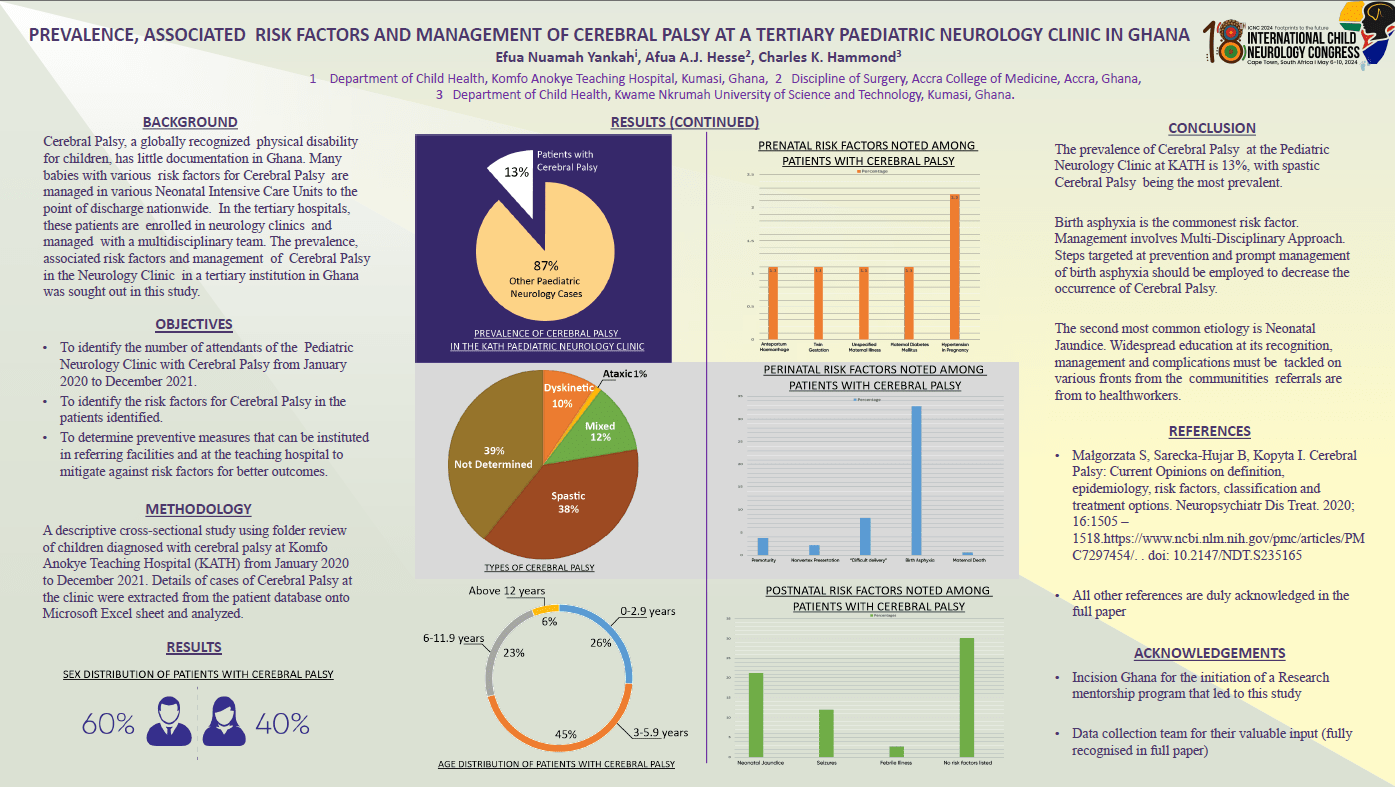Prevalence, Associated Risk Factors And Management Of Cerebral Palsy At A Tertiary Paediatric Neurology Clinic In Ghana
Introduction: Cerebral palsy (CP), a disorder of movement and/or posture from insults to the developing brain, is globally recognized with many risk factors. In Ghana, it has relatively little documentation from clinical practice. This study sought to assess the prevalence and associated risk factors at a paediatric neurology clinic in Ghana; and could lead to the development of some preventive measures. Methods: A descriptive cross sectional study using folder review of children diagnosed with cerebral palsy at Komfo Anokye Teaching Hospital (KATH) from Jan-2020 to Dec-2021. Details of cases of CP at the clinic were extracted from the patient database onto Microsoft Excel sheet and analyzed. Results: There were 1384 out-patients seen at the clinic, out of which 183 (13.2%) were diagnosed with cerebral palsy. Two-thirds of the cases were aged <5 years, with 60% males. Identified risk factors included birth asphyxia (33%), severe neonatal jaundice (21%) and neonatal seizures (12%). Thirty-eight percent were classified as spastic, 9% as dyskinetic, 1% as ataxic, 12% as mixed. Management involved multidisciplinary teams (MDT) with 73% enrolled in physiotherapy, 48% seen at audiology/ENT, 36% at ophthalmology, 24% by speech therapists, 21% by occupational therapists and 6% by nutritionists. Conclusion: The prevalence of CP at the Pediatric Neurology Clinic at KATH is 13%, with spastic CP being the most prevalent. Birth asphyxia is the commonest risk factor. Management involves MDT approach. Steps targeted at prevention and prompt management of birth asphyxia should be employed to decrease the occurrence of CP.
Efua Nuamah Yankah
Komfo Anokye Teaching Hospital
Ghana
Afua Hesse
Accra College of Medicine
Ghana
Charles K Hammond
Komfo Anokye Teaching Hospital
Ghana

Esra Ozpinar
medipol mega university hospital
Turkey